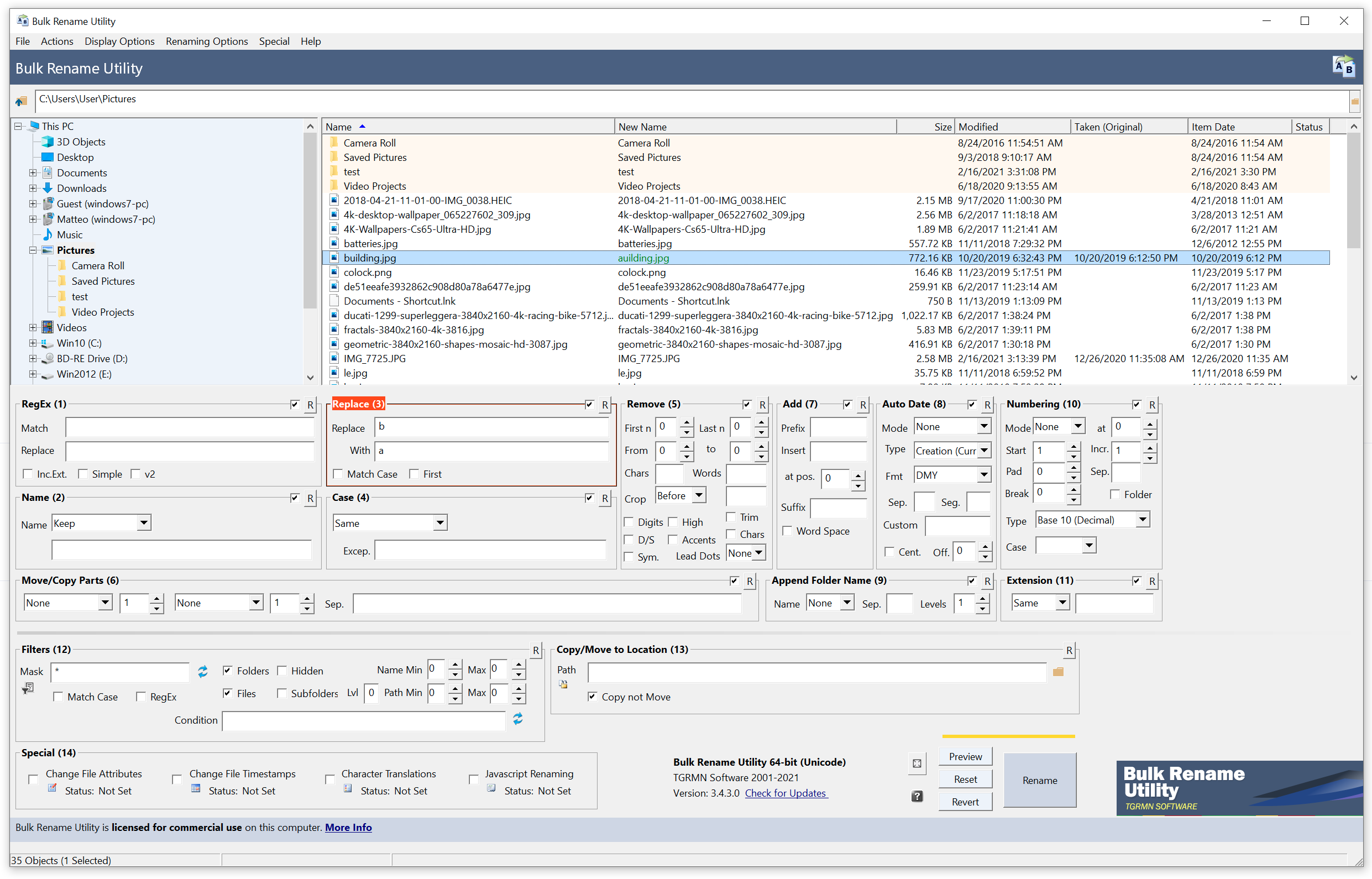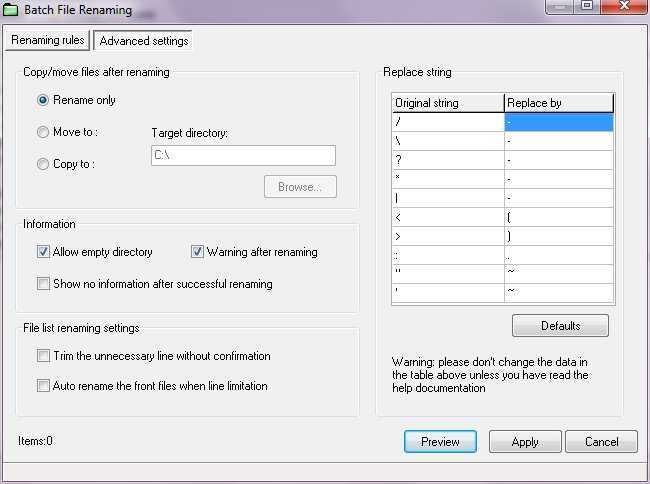
Auto Date (8): Add dates to file names (choose between date Created, Modified, Accessed, Taken, or the Current date).Add (7): Add specific words or characters to file names.
 Move/Copy (6): Move or copy specific words or characters to different parts of the file name. Remove (5): Specifies characters and/or words to remove. Case (4): Sets different uppercase or lowercase options for text. (3): Finds specific text and replaces it with new text. File (2): Sets rules for the existing file name (Keep, Remove or Reverse it – or specify a new Fixed name). If you don’t know the language, leave this section alone. RegEx (1): A find-and-replace tool that uses a complex computer language called Regular Expressions. Right Navigation Pane (B): A detailed list-style view of the files and folders inside of whatever’s selected in the Left Navigation Pane. Left Navigation Pane (A): A hierarchical tree-style view of computer drives and folders. Keywords: article structure, in-text tagging, keyword counting, keyword occurrence analyzer. It is already used for the practical testing and provides a basis for the future improvements. The proposed analysis of keywords occurrences is implemented in a web-based PHP – MySQL application.
Move/Copy (6): Move or copy specific words or characters to different parts of the file name. Remove (5): Specifies characters and/or words to remove. Case (4): Sets different uppercase or lowercase options for text. (3): Finds specific text and replaces it with new text. File (2): Sets rules for the existing file name (Keep, Remove or Reverse it – or specify a new Fixed name). If you don’t know the language, leave this section alone. RegEx (1): A find-and-replace tool that uses a complex computer language called Regular Expressions. Right Navigation Pane (B): A detailed list-style view of the files and folders inside of whatever’s selected in the Left Navigation Pane. Left Navigation Pane (A): A hierarchical tree-style view of computer drives and folders. Keywords: article structure, in-text tagging, keyword counting, keyword occurrence analyzer. It is already used for the practical testing and provides a basis for the future improvements. The proposed analysis of keywords occurrences is implemented in a web-based PHP – MySQL application. 

That is to be done on collection and conversion of the texts in one or more txt-format input files. For discrimination of the article parts, the already existing, implicit tagging must be minimally assisted by the user. researchers, writers, editors, and others for the reviewing and statistical exploration of the articles.

Also, the analysis is meant to be applied to more than one article at once. The authors present the concept and implementation of the keyword occurrence analysis that is based on the separate counting of (key)words in the four main parts of scientific and other types of articles: the title-followed by a list of authors, abstract, list of keywords, and the main text.








 0 kommentar(er)
0 kommentar(er)
